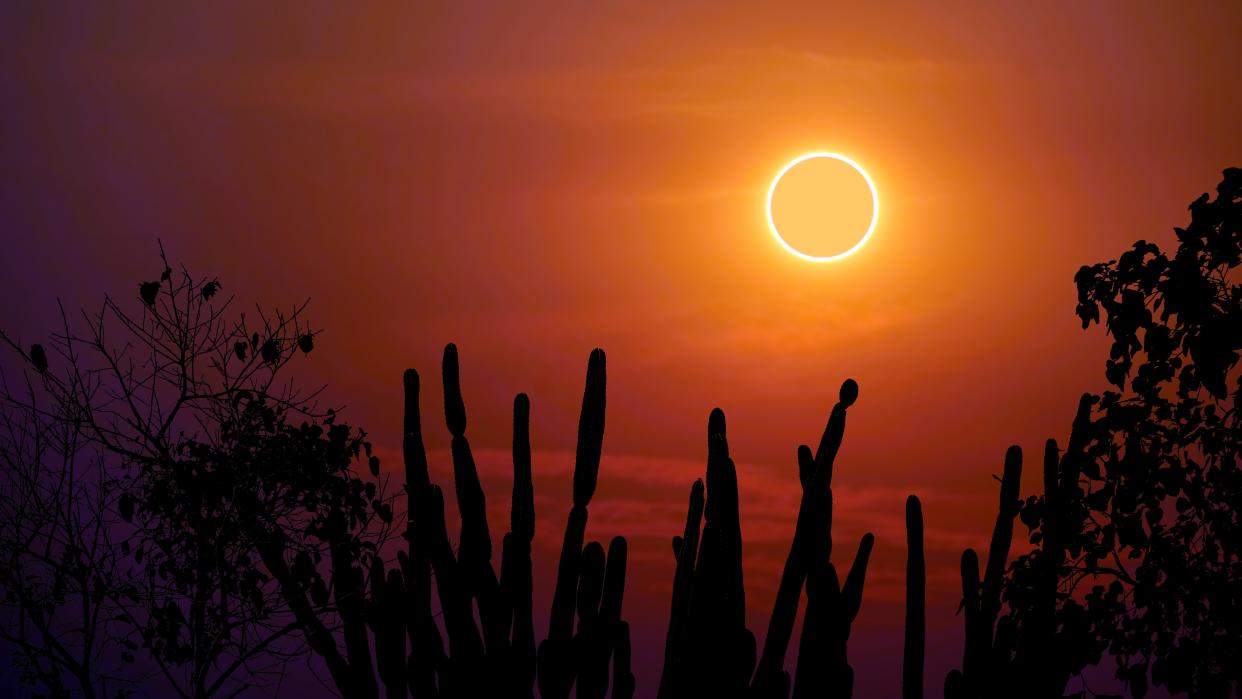How to watch the annular solar eclipse on Oct. 14 from anywhere

On Saturday, Oct. 14, an annular solar eclipse will be visible across North America. You can watch the eclipse action live here on Space.com courtesy of NASA.
The October annular eclipse's famous "ring of fire" will cross eight U.S. states from Oregon to Texas, according to NASA. If you're not fortunate enough to see it in person, the eclipse will be livestreamed for free online. You can also keep up with all the eclipse content with our annular eclipse live blog.
During an annular solar eclipse, the moon appears slightly smaller than the sun. As such, it doesn't block the entire solar disk like it would during a total solar eclipse. Instead, the moon's shadow covers most of the disk, leaving the outer rim, resulting in a beautiful "ring of fire."
Where to watch in person
During the annular solar eclipse, the entire Americas will experience a partial solar eclipse. But for those of you who want to see the 'ring of fire,' you'll need to travel to the 125-mile (200-kilometer) wide path heading from the northwest U.S. through Central America to Brazil.
Related: Which U.S. states will October's 'ring of fire' solar eclipse be visible from?
Below is a list of notable locations and cities that will experience the 'ring of fire' solar eclipse, along with the time and duration of the event according to French eclipse expert Xavier Jubier who has created an interactive map detailing the entire path of the annular solar eclipse.
Annular solar eclipse livestreams
For those of you wanting to watch the annular solar eclipse online, there are many livestreams available.
Timeanddate livestream
Skywatching website timeanddate.com will also be covering the annular solar eclipse from start to finish with their livestream and live-blog with real-time progress reports and background information.
Exploratorium livestream
San Francisco's Exploratorium will have several livestreams available, from the Valley of the Gods, Utah to Ely, Nevada. They will also include a stream with live sonification (music only without any other commentary or interruptions) and also live eclipse coverage in Spanish.
Slooh livestream
Slooh invites all space enthusiasts to join them for their online Star Party on Saturday, Oct.14 at 11 a.m. EDT (1500 GMT). Here you'll be able to witness the annular solar eclipse via Slooh's professional-grade online telescopes and listen to expert commentary.
You can watch the livestream below or via Slooh's YouTube channel, Twitter or Facebook.
Virtual Telescope Project livestream
The Virtual Telescope Project will bring the annular solar eclipse to you live courtesy of an international team. The eclipse will be streamed on their webTV page from 12:30 EDT (16:30 GMT.)
Follow us on Twitter @Spacedotcom and Facebook.

